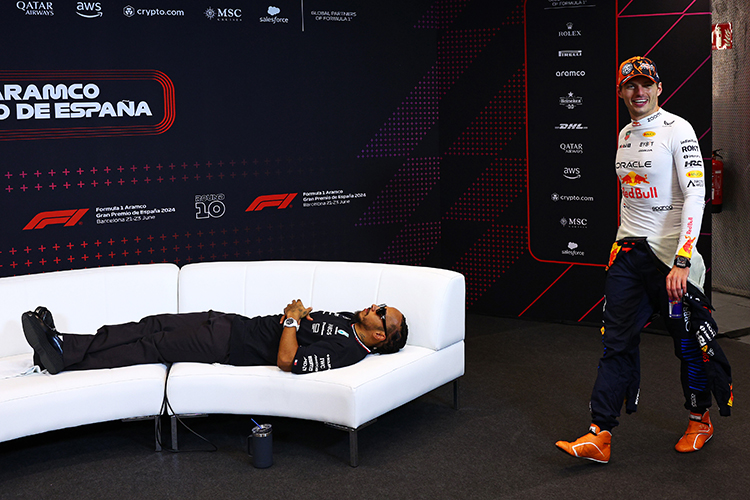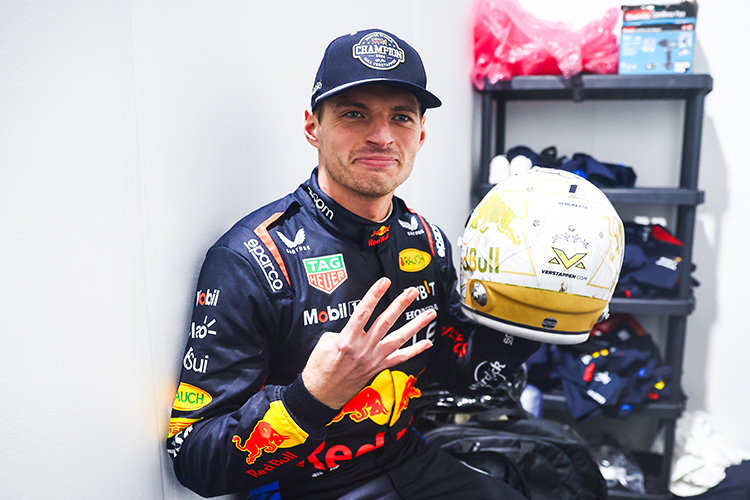Five years on: how technology saved Romain Grosjean at the 2020 Bahrain GP
 Red Bull Racing/Red Bull Content Pool
Red Bull Racing/Red Bull Content Pool
The technological advancements that saved Romain Grosjean's life at the 2020 Bahrain Grand Prix
It's been half a decade since one of the most horrifying crashes in Formula 1 history took place at the 2020 Bahrain Grand Prix. As the race unfolded, Romain Grosjean was caught in an incident that would forever be etched in the annals of motorsport. The then-Haas driver was trapped inside his burning car for 27 agonizing seconds before emerging with only burns to his hands. The crash and Grosjean's miraculous escape underscored the critical role of F1’s safety innovations in saving lives.
The incident that changed everything for Romain Grosjean at the 2020 Bahrain Grand Prix
During the opening lap, Grosjean's car collided with Daniil Kvyat's, sending him careening into the barriers at a horrifying 119 mph (192 kph). The impact split Grosjean's car in two, the front half penetrating the guardrail and immediately bursting into flames. The resultant force was measured at a staggering 67 Gs, in stark contrast to the 6 Gs typically experienced during heavy braking.
Remarkably, Grosjean managed to extricate himself from the wreckage, and with the rapid response of the F1 medical car team led by Dr. Ian Roberts, he was pulled to safety. This incident highlighted several critical technologies that worked in concert to save Grosjean’s life.
The carbon-fiber cocoon: the monocoque
Central to Grosjean’s survival was the monocoque structure, a carbon-fiber safety cell that has been a staple of Formula 1 design since its introduction in 1981 by John Barnard’s McLaren. The monocoque is designed to withstand extreme impacts and protect drivers under the most severe conditions. In Grosjean’s crash, the survival cell remained intact despite the car breaking apart, absorbing an impact equivalent to 67 Gs and shielding him from life-threatening injuries.
The HANS device
Another critical safety technology is the Head and Neck Support (HANS) device. Initially met with skepticism, it has since become an indispensable part of driver safety. The HANS device prevents severe head and neck injuries by stabilizing the driver's head during high-impact crashes. In Grosjean's case, this device protected him from potential neck and skull fractures.
The halo: sceptic turned believer
Perhaps the most significant advance in recent F1 safety history is the Halo. This titanium structure, capable of withstanding 12 tons of force, was designed to protect drivers from flying debris and direct impacts. Grosjean had been a critic of the Halo, famously stating, "I don't think it has a place in F1." However, the Halo proved essential during his crash, deflecting the guardrail away from his head. From his hospital bed, Grosjean admitted, "I wasn't for the Halo some years ago, but it's the greatest thing that we've brought to Formula 1, and without it, I wouldn't be able to speak with you today."
Fire protection and the extraction test
The horrifying fireball that ensued from Grosjean’s crash was a stark reminder of the ever-present danger of fire in motorsports. Grosjean was wearing an Alpinestars suit made of Nomex, a flame-resistant material designed to withstand temperatures from 800 to 1,000 degrees Celsius for up to 18 seconds. Miraculously, Grosjean endured 27 seconds of flames and still escaped with relatively minor injuries, highlighting the suit's efficacy.
Further contributing to Grosjean's survival was the rigorous extraction test all F1 drivers must pass, ensuring they can unbuckle, clear the cockpit, and escape within 10 seconds. Grosjean surpassed this benchmark in real-world conditions by enduring 28 seconds, making his escape even more remarkable.
Rapid response: the medical car
The crucial role of the F1 medical car, following the field at the start of every race, cannot be overstated. Driven by Alan van der Merwe with Dr. Ian Roberts as the passenger, the medical car reached the crash site within 11 seconds, a response time that was instrumental in saving Grosjean’s life. Roberts, with a fire extinguisher in hand, was ready to assist Grosjean as he emerged from the inferno.
Grosjean's survival in the 2020 Bahrain GP crash highlights key safety innovations
Romain Grosjean's survival in the 2020 Bahrain Grand Prix crash showcased the efficacy of multiple safety innovations developed over decades. From the carbon-fiber monocoque to the HANS device, the Halo, and the quick response of the medical team, each element played a crucial role in protecting the life of a driver. Grosjean's accident underscored the continuous need for advancement in motorsport safety and stands as a testament to the remarkable strides already made in protecting drivers at the pinnacle of auto racing.
Up Next



